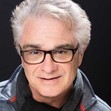My Fascination with Vacuum Tubes
As you may know, I set my Preacher Evan Wycliff mystery novels in a small farm town in Southern Missouri. This was the ancestral home of my mother’s family. When I was a boy, my grandparents sometimes took me there on weekends. I learned to fish for catfish and smallmouth bass with a bamboo pole baited with an earthworm. I rode a horse (or, at least, sat on one briefly), and I was allowed to pet a sheep as I marveled at its runny nose.
On these outings, my grandfather, whose given name was Caspar, would sometimes share stories from yesteryear. I learned that as a young man he’d played on the Rockville softball team. His nickname then was “Dutch” because his body build was “dutchy” (long torso with short legs—like Popeye). My grandmother, Pearl, taught all the grades in Rockville’s one-room schoolhouse.
One of these stories was about the achievements of a local prodigy of his generation—Clarence Melton. Clarence was reputed to have calculated the pitch of a wooden propeller he was carving for his own light plane by observing a spiral staircase. He was also said to have invented the circuitry of the superheterodyne radio. He eventually moved north to Kansas City where he took a job as an aircraft engineer for Trans World Airways (TWA), which was headquartered there at Midcontinent Airport. During the Great Depression, Clarence urged Caspar, who was running an auto repair shop at the time, to apply for work at the airport, where he eventually became a maintenance supervisor on the big four-engine Constellation passenger planes.
Over the years the superheterodyne story stuck with me. When I was in my early teens, I scavenged tube radios. I got some working simply by replacing the tubes (which was about all I was capable of doing). I studied the basics of radio-frequency broadcast reception. And I learned how the superheterodyne circuit greatly improved the quality of the sound by both amplifying the signal and reducing noise.
Flash forward to my career as a novelist. When I wrote Bonfire of the Vanderbilts, I wanted to make the character Alan Atwood something of an evil genius. I had to give him a technical obsession. I chose to make him fascinated with the superheterodyne radio.
This chapter from the book takes you inside his head.

In Alan’s WorkshopChapter 8 of Bonfire of the VanderbiltsHere’s a chapter from my novel Bonfire of the Vanderbilts, which has an art historian in the present day who is researching a scandal in the 1890s. The character Alan Atwood in this excerpt is the historian’s husband.
Tuesday, September 7, 2010, Brentwood
As the display of the digital clock on the wall above his bench changed to 2:07 AM, Alan labored over the guts of a 1932 Stewart-Warner table radio he had found recently at a yard sale. Frowning through a pair of high-powered magnifying glasses he’d gotten from a medical supply website, Alan concentrated on soldering a new ceramic capacitor in place of a charred paper one.
Capacitors, he thought. If there’s a problem, if a set isn’t working, you can bet that the orderly flow of electrons has been disrupted by a little capacitor that simply can’t take it anymore.



